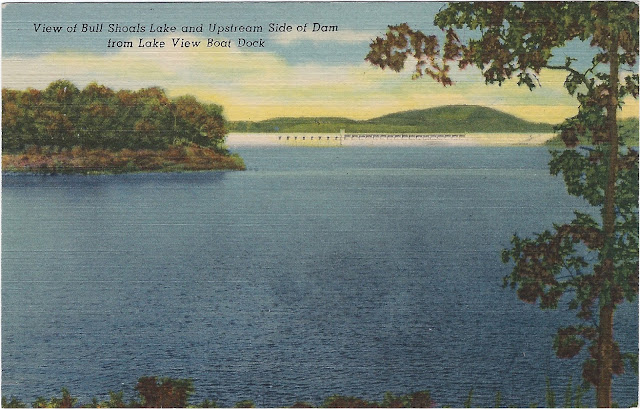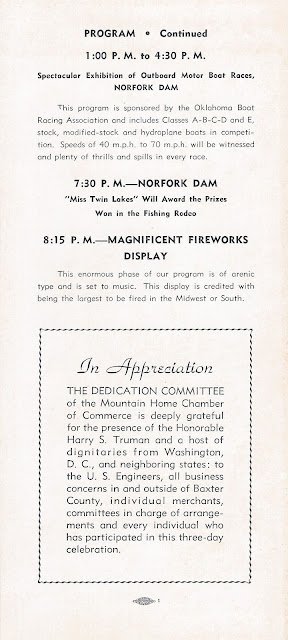Building Bull Shoals Dam
Part 1
Completed in November 1951, and dedicated in July 1952, Bull Shoals Dam was the result of a decades-long effort.
The original site was to be at Wildcat Shoals, but the foundation conditions were found to be unfavorable. In 1940, a report was published establishing that not only was the site at Bull Shoals more favorable, but it was also economically justified for purposes of flood control and producing hydroelectric power. 1941 saw Congress modifying the plan and authorizing $24,000,000 for the project. World War II put the build on hold.
 |
| General View of the construction bridge and contractors shop area. |
In an August 1949 report completed by the Little Rock District Corps of Engineers, the Construction of the dam was awarded to Ozark Dam Constructors, Houston, Texas. The time required for the construction was set at 5 years with nearly 3 million man-days of construction estimated for completion.
If you look at the above photo, you can see the Railroad tracks that were constructed from Cotter to move materials to the site. Remnants of the line are still visible, part of which is used for a walking trail from the Cotter City Park below the R.M. Ruthven Bridge.
Ozark Dam Contractors was a consortium of several companies from eight states and the District of Columbia. They broke ground in June 1947. Construction was a round the clock affair employing an average of 1500 employees.
 |
The "Government Village" of single and double unit dwellings was constructed on Government Reservation in Mountain Home to house the families of U.S. Engineers employees in the construction of Norfork and Bull shoals Dams, on the North Fork and White Rivers.
Posted Oct. 13, 1944, from Mtn. Home, AR |
Many of those employees were housed in a village built for the purpose, located near Mountain Home.
One of the most remarkable feats of engineering in the building of the Bull Shoals Dam was the conveyor belt, 7 miles long (the longest of its kind at the time), that carried crushed rock to the site over the mountain. It only broke down 1 time during that period after being struck by lightning. In order to get the crushed rock that was moved down the conveyor, very extensive blasting was done. According to accounts by local residents many of the businesses in downtown Flippin, as well as more than a few homes, were damaged as a result.


























